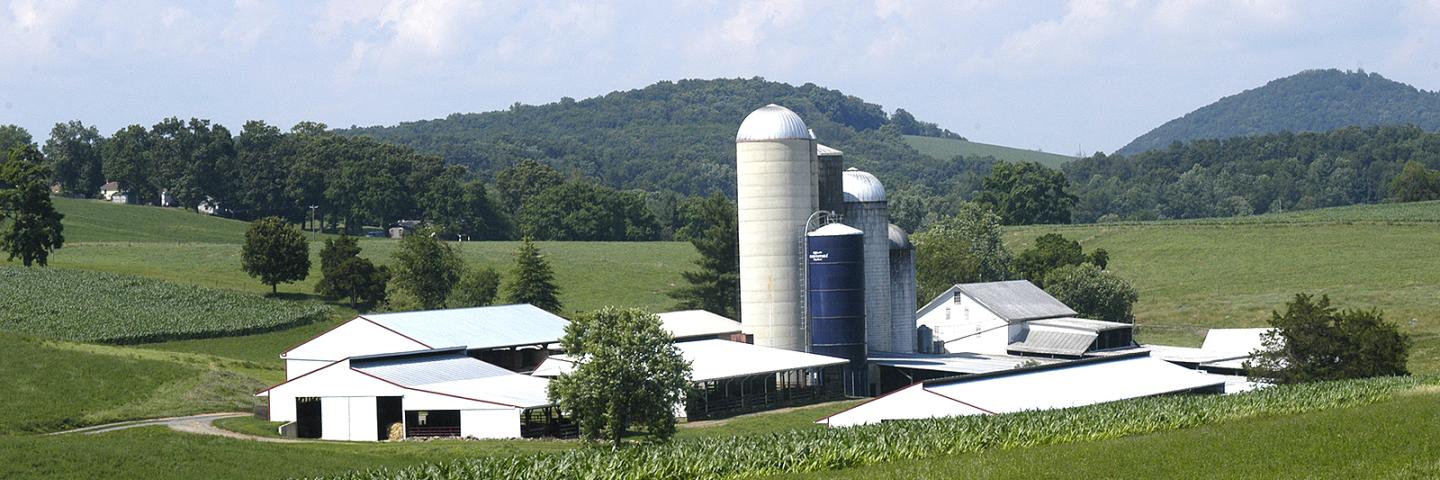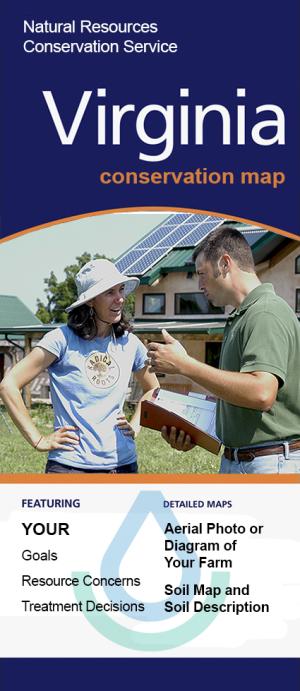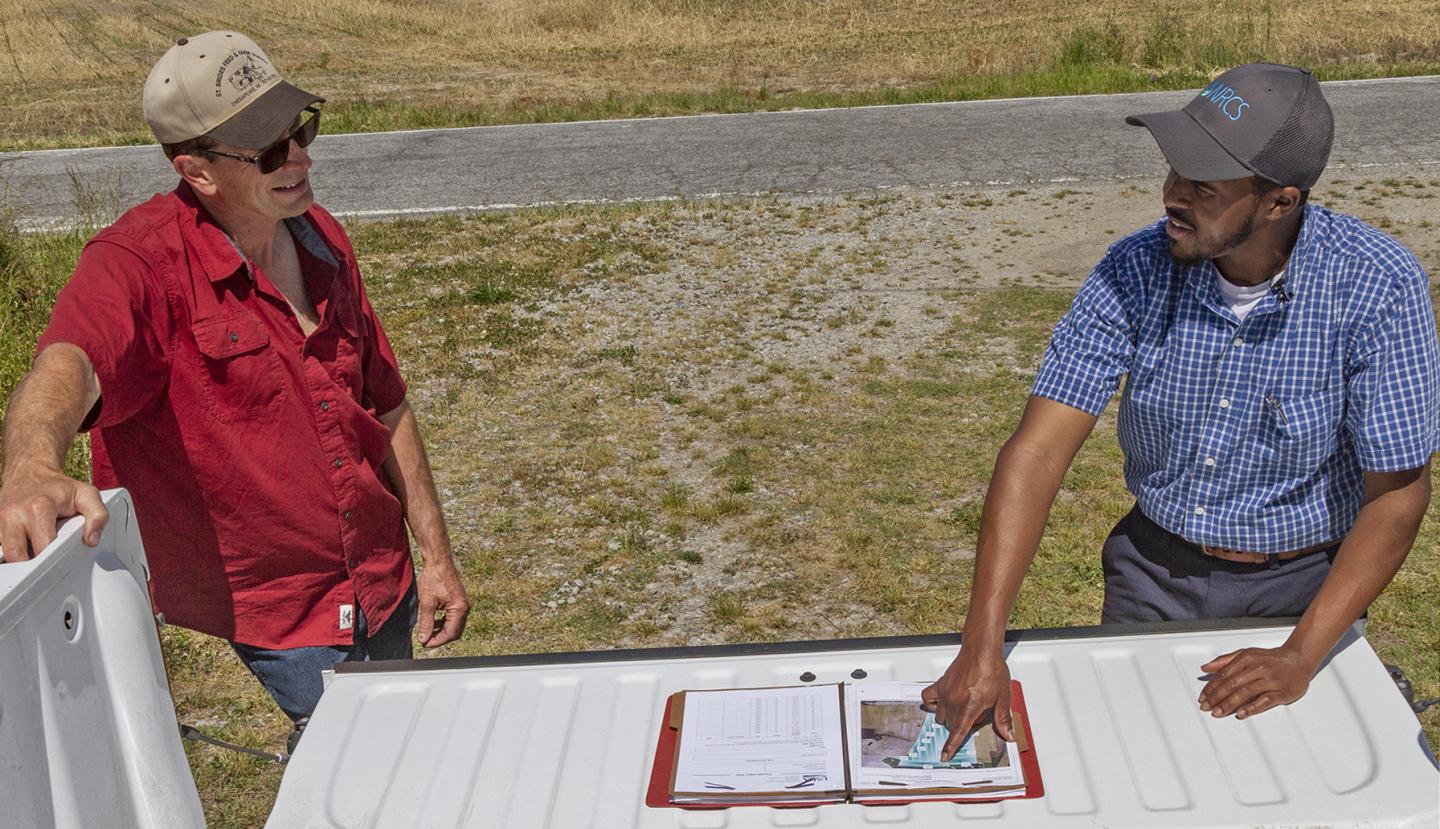
Got a farm? Get a plan. It's a free road map that helps you identify and reach goals for your operation.

Whether you’re taking a vacation or looking at retirement, you plan so you can be prepared and get the results you desire. The same idea applies to managing the natural resources on your land. A conservation plan can help you get where you want to go.
What is a Conservation Plan?
A conservation plan is a written record of your management decisions concerning your land. It outlines the conservation practices and systems that will work together to help achieve your goals for your operation. These goals might include lowering production costs,
increasing crop yields, improving soil health or water quality, conserving soil, increasing forage production or providing water for livestock.
Why Do I Need One?
Having a conservation plan today is a great way to prepare for tomorrow. Your plan can help you address natural resource problems like soil erosion, poor soil quality, degraded water quality, inadequate wildlife habitat and livestock-related issues.
How Will It Help Me?
There are many benefits to having a plan. The top 10 are listed here:
- Save money as your land becomes more productive
- Increase sustainability by protecting the natural resources that support your business
- Increase the value of your property
- Create open space and improve habitat for wildlife
- Conserve soil and water for times of drought and future use
- Prevent off-site impacts and comply with environmental regulations
- Save time and labor in agricultural production
- Promote the health and safety of your family
- Make your land more attractive and foster good relations with your neighbors
- Help you become eligible for most USDA programs, including crop insurance

Three-Phase Conservation Planning Process
PHASE 1: COLLECTION AND ANALYSIS
1. Identify problems and opportunities
2. Determine objectives
3. Inventory resources
4. Analyze resource data
A Natural Resources Conservation Service (NRCS) certified conservation planner will work with you to complete a field inventory of your operation. The inventory includes the following:
- Map of existing fields and land uses
- Existing improvements (i.e., wells, ditches, fences)
- Condition of soil, water, air, plant, animal resources and energy resources
- Opportunities to improve your natural resources and bottom line
PHASE 2: DECISION SUPPORT
5. Formulate alternatives
6. Evaluate alternatives
7. Make decisions
NRCS will work with you to evaluate management activities you may want to include in your plan, document your decisions and outline a schedule for implementing recommended conservation practices. These activities may include:
- Management Practices – nutrient management and prescribed grazing
- Structural Practices – wells, pipelines, fences and ag waste facilities
- Vegetative Practices – residue management, no till, cover crops and conservation cropping systems
PHASE 3: APPLICATION AND EVALUATION
8. Implement the plan
9. Evaluate the plan
Once your plan is created, NRCS will continue to provide you with technical assistance, which includes:
- Designs for conservation practices in your plan
- Layout, installation, and operation and maintenance activities
- Financial assistance and other opportunities
Living the Dream
The professionals at your local NRCS office can provide free assistance to help you develop or refine your conservation strategy. Your plan is uniquely designed to meet the needs of your operation, land and life. You choose the options that best fit your farm.
Our planners provide science-based technical assistance to help you map out the right combination of practices and a time frame for installing them that fits your schedule. We will let you know about funding available through the 2018 Farm Bill and other state and federal programs and walk you through the application process.
Your plan does not authorize public access to your property. You control all rights of entry and use. We also protect your privacy. Information in your conservation plan is confidential and is not released to other agencies, groups or individuals.
Contact Us
It’s that easy, so why not get started today? Contact your local NRCS office to learn more about next steps.

